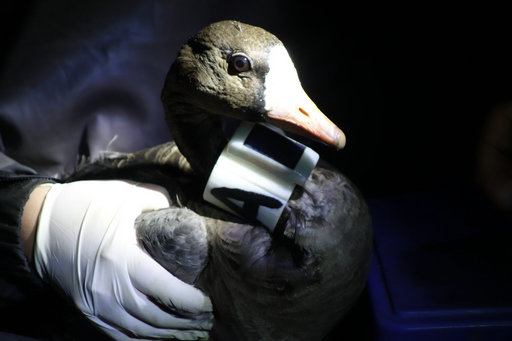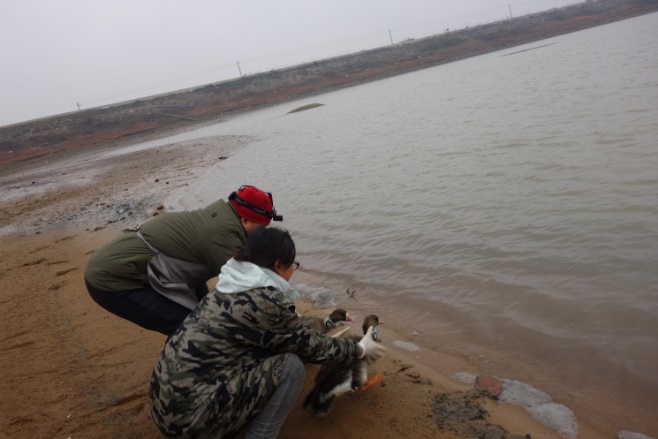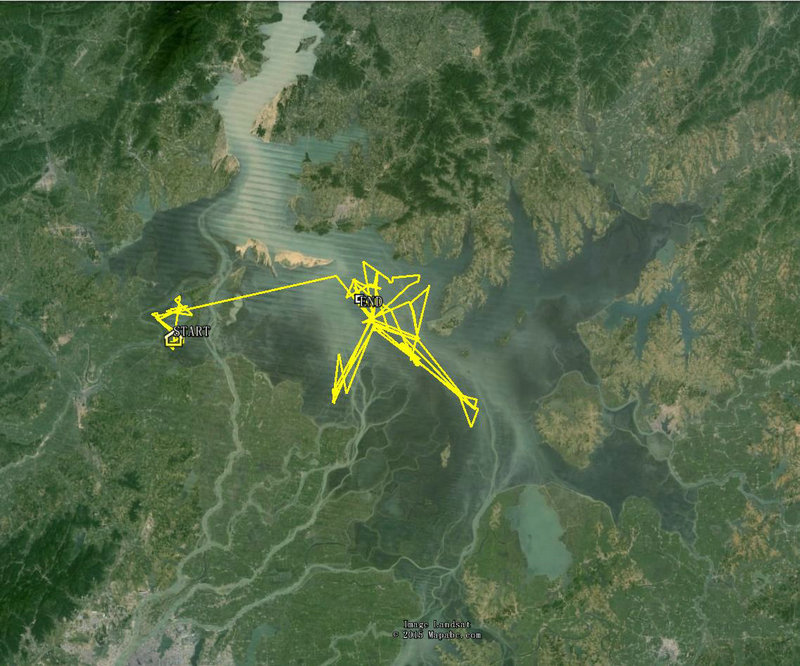Yali Si’s Research Group at the Center for Earth System Science, Tsinghua University carried out satellite tracking of Russian Greater White-fronted Geese in Poyang Lake, China from 20th January to 15th February 2015. They aim to investigate the environmental influence on the migration strategies and spatiotemporal patterns of Arctic breeding geese along the East Asian flyway. This fieldwork was funded by the NSFC Project “Environmental influence on spatiotemporal migration patterns of East Asian birds” and was conducted in collaboration with Jiangxi Poyang Lake National Nature Reserve Authority.
Four Greater White-fronted Geese equipped with GPS-GSM neck loggers were released at the capture sites and are in good condition. The research group is continuously receiving up to date tracking data, which will be used to obtain a thorough understanding of the winter movements of Greater White-fronted Geese along the Yangze River. Furthermore, they will obtain tracking data of individual Greater White-fronted Geese during spring migration. These data will help to understand the migration pattern of this population along the East Asian-Australasian Flyway and the underlying environmental mechanisms.
Please contact Yali via email (yalisi@mail.tsinghua.edu.cn) if you are interested in the work. Students with backgrounds in remote sensing, GIS, geography, ecology, or environmental sciences are welcome to join Yali’s Research Group.

First captured Greater White-fronted Goose THU01 (photo by Yali Si)

Releasing Greater White-fronted Goose THU02 and THU03 (photo by Fei Xu)

Satellite tracking of Greater White-fronted Goose THU02 from 1st February to 1st March
Do not use the above photos without permission.
(Written by Yanjie Xu; Edited by Yanfei Pu)